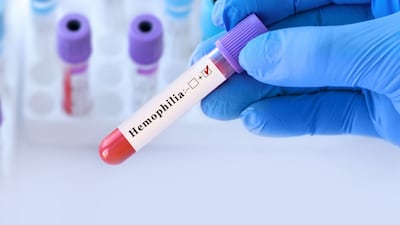Rare Diseases
A court order encompassing funding, drug pricing, clinical trials and overall policy implementation aspects is expected to bring about a paradigm shift in the treatment of rare diseases in India. Sarepta, Roche and Sanofi are among the key players that have been part of pricing discussions.
Merck & Co. won European Commission approval for Winrevair on top of other medicines for pulmonary arterial hypertension and expects an initial EU launch in Germany.
The company, in its new profitable era, is bringing in new leadership, with Amgen VP of medical affairs for rare diseases Greg Friberg and recently retired Roche Partnering head James Sabry.
Bluebird, Vertex and Sarepta are starting to see some commercial gene therapy traction and expect momentum to pick up in the second half, while hemophilia remains a challenging area.
The Milan-based drugmaker, which is reportedly attracting attention from private equity firms, has put in a strong performance in the first half of the year, helped by a strong showing for its rare disease franchises.
The company’s giroctocogene fitelparvovec, partnered with Sangamo, could compete with BioMarin’s hemophilia A gene therapy Roctavian, but longer-term data may be needed.
Ionis plans to initiate a Phase III trial for ION582 in the first half of 2025, positioning it just behind Ultragenyx in the race to bring a treatment to market for the rare neurologic condition.
After expanding its local portfolio through acquisitions and partnerships, Chiesi is now aiming to build its presence in Japan's rare disease sector over the long term, helped by development of global products and possible new alliances.
Jeeva’s founder and CEO talks to Scrip about how the firm’s clinical trial management platform does away with the need for numerous point solutions and vendors, enabling sponsors to undertake trials more effectively including in the complex and competitive oncology space.
When loss-making biotech companies mix debt with sluggish sales, difficult options like restructuring and asset sales remain.
On the back of a “truly one in a million” case, Ashibio has revived research into Gilead's discontinued asset andecaliximab after it showed promise in the ultra-rare musculoskeletal condition FOP.
Arrowhead’s in-house, late-stage cardiovascular disease programs will center on triglyceride-lowering plozasiran while it seeks a partner to fund Phase III for cholesterol-reducing zodasiran.
Academia-developed novel oral PAI-1 inhibitor in combination with Opdivo showed a strong response rate in PD-1 treated melanoma patients with certain disease characteristics and could represent a new breakthrough for a class with no clinical stage competitors.
The merger of Freeline and SwanBio is establishing an entity with secure financing to advance their respective gene therapies for Gaucher’s disease and adrenomyeloneuropathy.
With the urea cycle disorder treatment Olpruva launched and the NPC therapy arimoclomol closing in on US approval, Zevra is one to watch in the rare disease space.
The Mereo-partnered drug is in pivotal development for osteogenesis imperfecta. Ultragenyx also recently reported positive Phase III data for a rare disease gene therapy.
Amgen’s study shows an 87% risk-reduction for IgG4-related disease flares, which can exacerbate the rare disorder and lead to irreversible organ failure. A US filing is planned.
Guest speaker Professor Guangzuo Luo joins Brian Yang and Dexter Yang to discuss orphan drug development and going global trends for Chinese bioventures, along with the latest business moves from Shanghai Fosun and Jiangsu Hengrui.
Signs are that the rate of sales growth for orphan drugs is slowing but that does not mean that they have had their day. Far from it, finds a new report from Evaluate.
Chinese developers of innovative drugs for rare diseases are hoping to step into the global spotlight, helped by rapid clinical progress and low costs on their home turf.




















